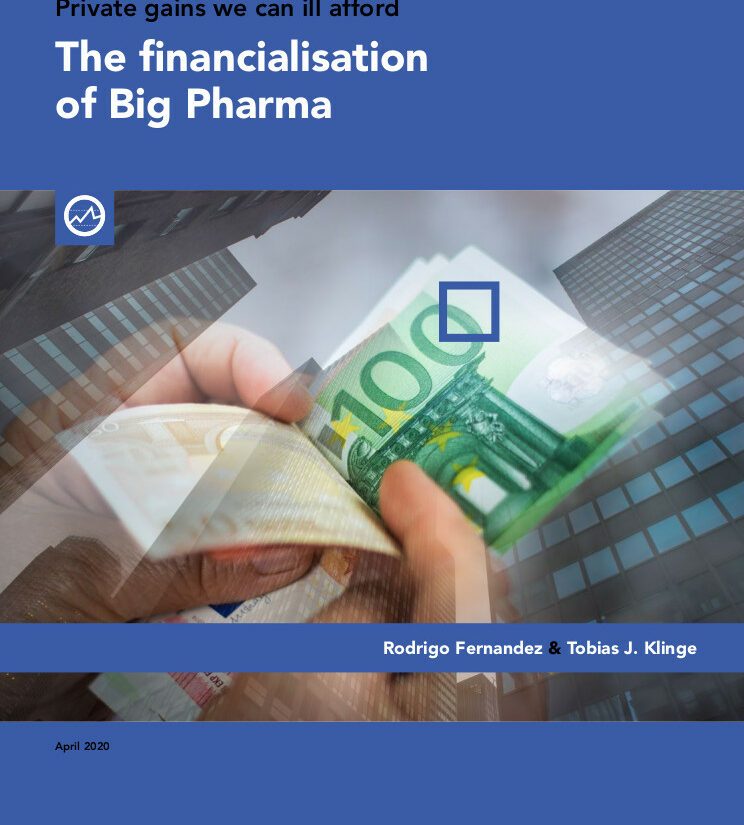
Private gains we can ill afford
The financialisation of Big Pharma

In this report, SOMO examines how the pharmaceutical industry has shifted focus in the past 18 years towards a financialised business model to boost their own profit margins. This business model revolves around maximising payouts to shareholders at the expense of making productive investments in new medicines that might benefit the population at large.
The research focuses on the financial accounts of 27 of the world’s largest pharmaceutical companies (known as ‘Big Pharma’) from 2000 to 2018 – looking at three indicators that are identified in the academic literature:
- The size of the balance sheet (financial reserves and debt);
- The size of shareholder compensation (dividends and share buybacks);
- The size of intangible assets (intellectual property rights and goodwill) in proportion to total assets.
The research undermines the industry’s argument that high medicine costs are necessary for drug research and development. The ‘financialisation’ of the industry also makes the sector vulnerable to fluctuations in the capital market – with potentially high costs to society, as highlighted by the coronavirus crisis.
Do you need more information?
-

Rodrigo Fernandez
Senior researcher
Publication
Accompanying documents

Related news
-
Why share buybacks are bad for the planet and peoplePosted in category:Opinion
 Myriam Vander StichelePublished on:
Myriam Vander StichelePublished on: Myriam Vander Stichele
Myriam Vander Stichele -
 EU health data law rolls out the red carpet for Big TechPosted in category:Long read
EU health data law rolls out the red carpet for Big TechPosted in category:Long read Irene SchipperPublished on:
Irene SchipperPublished on: -
Civil society coalition urges EU to put the interests of patients and citizens at the heart of the European Health Data SpacePosted in category:Published on:Statement

